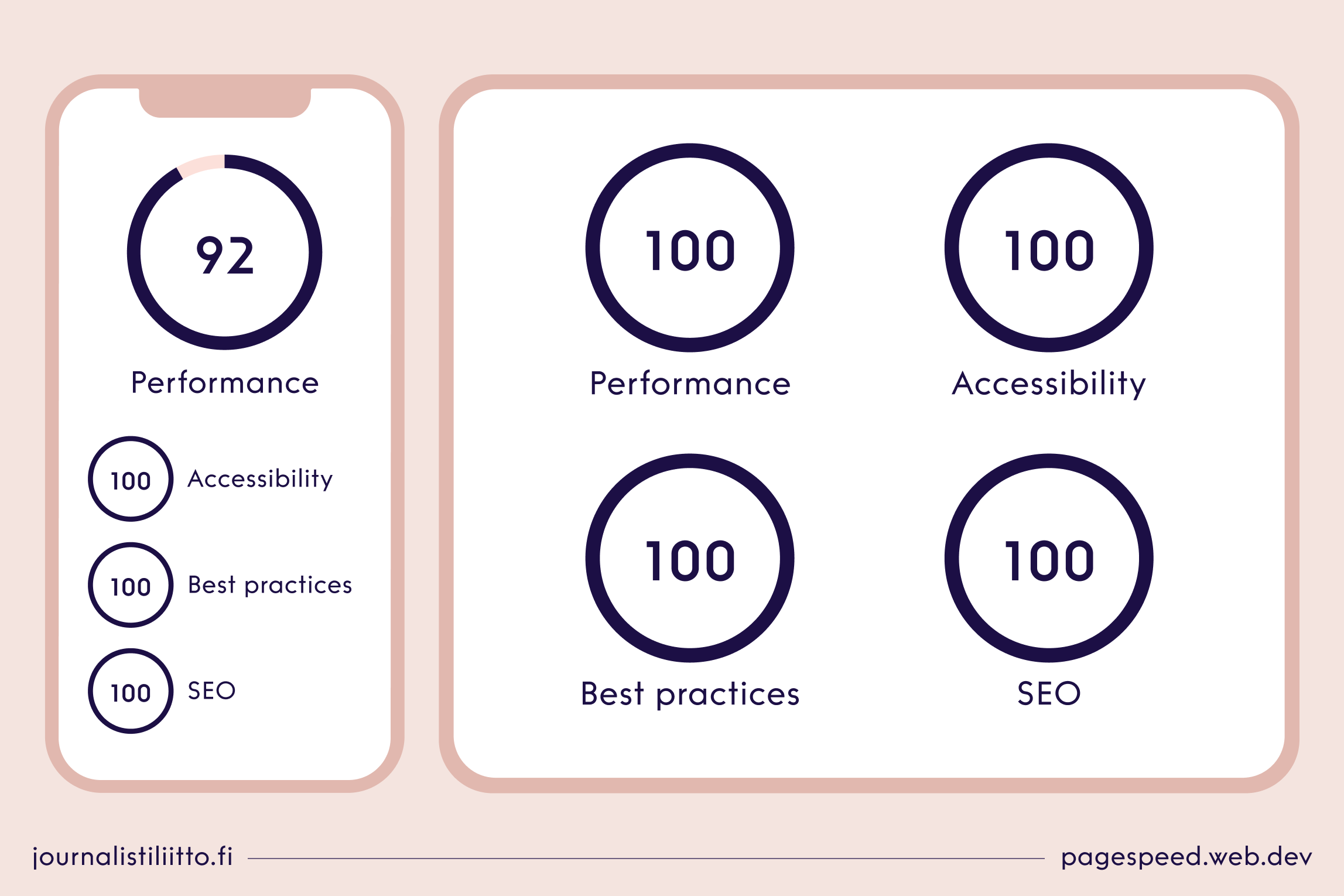Website performance and its impact on search engine visibility
Website performance is just one of several hundred factors that affect your site's search engine visibility, therefore this article deals only with one small factor out of many. However, the poor performance of a website can have far-reaching effects when end users are not having a good experience on the site, which also lowers the score in terms of search engine visibility. Therefore, it’s definitely worth paying attention to performance. So how do you measure website performance and which metrics are particularly important in it? In this article, I'll discuss the Core Web Vitals metric published by Google a couple of years ago and a few tools that make it easy to measure performance.

Website performance is just one of several hundred factors that affect your site’s search engine visibility, therefore this article deals only with one small factor out of many. However, the poor performance of a website can have far-reaching effects when end users are not having a good experience on the site, which also lowers the score in terms of search engine visibility. Therefore, it’s definitely worth paying attention to performance. So how do you measure website performance and which metrics are particularly important in it? In this article, I’ll discuss the Core Web Vitals metric published by Google a couple of years ago and a few tools that make it easy to measure performance.
Website performance as measured by Core Web Vitals metrics
When measuring website performance using the Core Web Vitals metrics, the performance is evaluated on three different metrics:
- Largest Contentful Paint (LCP) measures the site’s loading speed, i.e. the time in which the majority of the site has been loaded for the user. To guarantee a good user experience, the LCP download time should take less than 2.5 seconds.
- First Input Delay (FID) measures the interactivity of the website, i.e. the speed of the ‘reaction time’ to the user’s clicks. Here, it would be good to aim for a reaction time of less than 100 milliseconds, so that the user does not get frustrated with slowness.
- Cumulative Layout Shift (CLS) measures so-called visual stability, i.e. whether there are elements changing position on the page, and if so, by how much. This metric is therefore not time-based, but measures the number of shifting elements that disrupt the user experience and scores them. A good value for this is less than 0.1pt.
I won’t go into detail on these metrics in this article, but I recommend getting to know them, for example, on Google’s Support page . In any case, these are good metrics to determine the performance and the user experience of the website; the more points the measurement gives to your site, the better the performance and user experience.
Effects of Website Performance on Google Visibility
According to numerous sources, achieving good scores with the Core Web Vitals measurement can result in a gradual improvement in the website’s search engine visibility. As DeBugBear mentioned in their article, Google has stated that performance is one factor that affects search engine visibility. Especially if your site is currently performing poorly, improving its performance can gradually increase your site’s search engine visibility. When your site achieves good scores as measured by Core Web Vitals metrics, it is likely that search engine visibility cannot be significantly improved by further performance optimisation.
As mentioned at the beginning of the article, performance is one of the many factors that affect search engine visibility. The most important factor is, of course, high-quality content. We can help with both site performance and content optimisation, so get in touch and let’s investigate your situation in more detail.
Easy-to-use website performance measurement tools
If you are interested in finding out the performance of your website yourself, try the tools listed below, for example:
There are a few tools that rate how ecological your web service is, the results of which should be taken with a pinch of salt:
WordPress site performance optimization
Redandblue offers easy-to-purchase service packages for optimising WordPress website performance. We can do a quick analysis of your site’s performance for free, so don’t hesitate to get in touch via the form below.
Example reference of a high-performance website: journalistitiliitto.fi
The front page of the new Union of Journalists in Finland website, launched in 2024, attains the following scores as measured by the Pagespeed tool:
Desktop
- Performance: 100
- Accessibility: 100
- Best practices: 100
- Search engine optimization: 100
Mobile
- Performance: 92
- Accessibility: 100
- Best practices: 100
- Search engine optimization: 100
As we can see, the results are at an excellent level. Performance is also one important factor from the point of view of a website’s ecological impact. Have a look at some of the test results given by ecological measuring tools for the Union of Journalists in Finland site:
